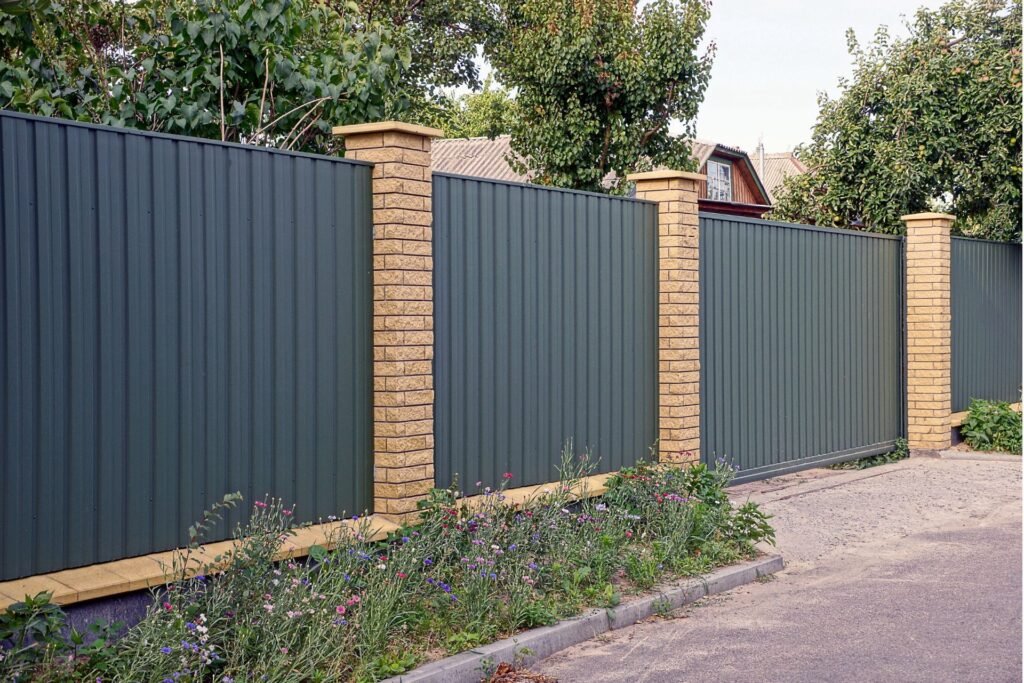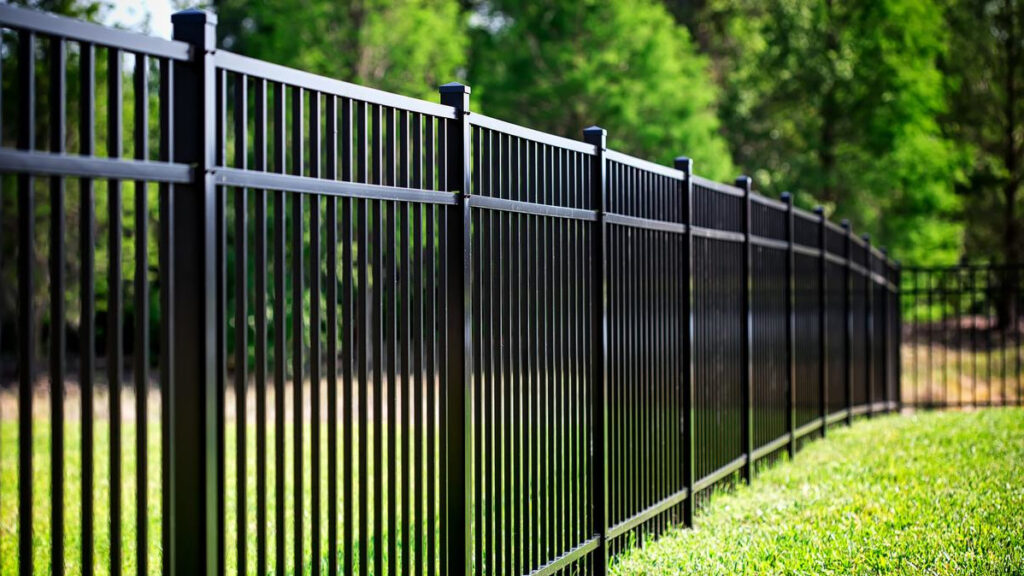The Best Materials Recommended by Top Fence Builders – Vinyl? Find Out Here
The Best Materials Recommended by Top Fence Builders – Vinyl? Find Out Here
Blog Article
A Comprehensive Guide to Fence Install: What You Need to Know About Fence Provider
When it comes to installing a fence, you have actually got a whole lot to consider. You'll require to analyze your residential property and determine if you want to deal with the installment on your own or hire a professional.
Recognizing Various Kinds Of Fencing Materials
When you're choosing a fencing, comprehending the different kinds of secure fencing products is crucial. Each product offers distinct advantages and drawbacks, influencing your choice. Wood supplies a traditional appearance and can be tailored, yet it needs normal maintenance and may rot over time. Plastic is low-maintenance and long lasting, resisting fading and pests, however it can be pricier upfront. Chain-link fence is cost-efficient and sensible for confining large areas, though it does not have privacy and visual allure. Steel fence, like functioned iron or aluminum, uses toughness and beauty yet might need corrosion defense. Composite products blend the most effective of wood and plastic, using resilience with an all-natural appearance. Consider your budget, wanted visual appeals, and maintenance preferences when reviewing these alternatives. Ultimately, picking the right material will certainly aid you develop a fencing that fulfills your demands and improves your home's value.
Examining Your Residential Or Commercial Property and Secure Fencing Needs
Prior to you start your fencing setup, it's vital to analyze your building limits and the purpose of your secure fencing. Comprehending local guidelines and permits will additionally aid you stay clear of any legal concerns down the line. By taking into consideration these elements, you'll ensure your fence satisfies both your needs and neighborhood criteria.
Home Limits and Lines
Understanding your home boundaries is essential for an effective fencing setup, as it not just helps you establish where your fencing will certainly go but additionally ensures you're valuing your neighbors' space. Begin by examining your building action or survey, which normally outlines the exact limits. You may additionally desire to talk to a specialist surveyor if you're not sure.
When you've established your limits, mark them clearly with risks or flags. This aesthetic aid will direct you during the installation and avoid any disputes with neighbors. Remember, neighborhood zoning regulations may dictate fence positioning and height, so inspect those policies too. Taking these actions warranties your fencing is appropriately placed and certified, making the whole procedure smoother for you.
Objective of Secure Fencing
Secure fencing offers numerous objectives that can significantly improve your residential property. It provides safety by creating a barrier that prevents intruders and safeguards your items. Second, it offers privacy, permitting you to enjoy your exterior room without bothering with prying eyes. Third, secure fencing can define your home limits, making it clear where your space finishes and your next-door neighbor's starts. Additionally, it can enhance the aesthetic charm of your home, adding personality and style while increasing visual allure. A well-placed fencing can assist take care of sound from nearby roadways or next-door neighbors and even maintain family pets and kids safe. By assessing your specific demands, you can select the best kind of secure fencing to achieve these advantages successfully.

Local Regulations and Permits
Exactly how can you ensure your fencing installation abides by local guidelines? Beginning by examining with your neighborhood zoning workplace or community site. Fencing in South Auckland. They frequently have guidelines regarding fencing elevation, materials, and positioning. You'll likewise intend to locate out if you need a permit prior to starting your job. Some locations require permits for any kind of new fence, while others might just require them for taller structures.
In addition, think about building lines and any kind of easements on your land. Marking your limits can avoid disputes with next-door neighbors or potential lawful concerns. By comprehending these policies ahead of time, you can stay clear of pricey mistakes and ascertain your fence is built to last, improving both your residential property's value and your tranquility of mind.
Local Laws and Permits for Fence
Prior to you begin your secure fencing project, it is very important to examine regional regulations and acquire any type of required authorizations. Each city or region has its very own regulations regarding fence elevation, products, and positioning. These guidelines assure that your fencing abides by safety requirements and community appearances.
You may need to submit a fencing plan, describing measurements and products. Some areas might even call for a study to validate building boundaries.
Overlooking to adhere to these guidelines can lead to penalties or required removal of your fence, squandering both money and time. So, put in the time to study and protect the appropriate licenses for a smooth setup process. This step is important in making certain your project aligns with regional regulations and community find out standards.
Choosing In Between Do It Yourself Installation and Professional Providers
Are you thinking about whether to take on the fence setup on your own or hire an expert? If you're handy and have experience with similar projects, DIY could save you money.
Setting up a fencing takes time, and if you're handling a busy timetable, hiring an expert can guarantee it gets done efficiently. If your yard has tough surface or details design needs, experts bring know-how that can make a distinction.
Finally, factor in regional regulations. A professional recognizes the permits and codes needed, assisting you avoid potential fines. Ultimately, weigh your skills, time, complexity, and regulations to make the most effective choice for your fence task.
Step-by-Step Overview to Fencing Installment
Once you've made a decision to move forward with your fencing setup, following an organized detailed technique will certainly assure a smooth process. Start by noting the fence line with risks and string to imagine the format. Next, inspect local regulations to verify conformity with height and building lines.
Dig article holes at the very least two feet deep, visit spaced according to your fencing type-- generally 6 to 8 feet apart. Put the messages into the holes and load them with concrete for stability. When the posts are established, affix the horizontal rails or panels, seeing to it they're level.
Check for any loosened connections and make essential modifications. Your fencing should now be prepared to enhance your residential property and offer the privacy or protection you require!
Upkeep Tips for Longevity of Your Fence
To keep your fencing looking great and long lasting longer, routine upkeep is vital. You should set up a cleaning routine, evaluate for any damage, and apply protective layers as needed. By staying aggressive with these tasks, you'll ensure your fence stays strong and attractive for many years ahead.
Regular Cleansing Set Up
While it may be very easy to forget, developing a normal cleansing routine is essential for preserving the durability of your fence. Start by washing your fencing with water a minimum of when every season to linked here remove dirt and particles. For wood fencings, use a gentle soap solution and a soft brush to scrub away any kind of mold and mildew or mold. Don't forget to look for any kind of corrosion on metal fences; a wire brush can aid remove it, complied with by a coat of rust-resistant paint. If you reside in an area with heavy pollen or dust, you may intend to enhance your cleaning regularity. Maintaining your fencing tidy not just improves its look however additionally extends its life, saving you cash in the future.
Check for Damage
On a regular basis examining your fence for damage is vital if you desire to keep its stability and long life. Begin by strolling around your fence to look for visible indications of wear, such as fractures, loosened boards, or rust. Inspect for any type of indications of insects, like termites or woodpeckers, that could jeopardize your fence's structure.
Apply Protective Coatings
After checking your fence for damage, applying safety finishings is a crucial action in guaranteeing its durability. Depending upon the material, you'll desire to pick the ideal kind of finishing. For wooden fences, a top notch sealant or timber discolor can avoid moisture absorption and hinder bugs. If your fence is vinyl or steel, take into consideration a UV-protective spray or paint to stop fading and rust.
Make certain to clean the surface thoroughly prior to application, as dust and grime can weaken the finish's effectiveness. Use the finish in dry climate for far better attachment, and don't neglect to comply with the producer's directions for the finest results. Routinely reapply every few years to maintain your fencing looking great and standing solid against the aspects.
Cost Factors To Consider and Budgeting for Your Fence Job
When intending your fence job, understanding expense factors to consider is crucial to staying within spending plan. Start by establishing the sort of product you want, as expenses can differ significantly in between wood, plastic, and steel. Don't forget to consider labor prices-- hiring experts could save you time however can boost your overall expenses.
Following, gauge your home to determine the direct video footage needed, as this directly influences product prices. In addition, take into consideration any kind of authorizations you may require, which can include in your budget plan.

Lastly, it's a great concept to set apart a backup fund for unforeseen expenditures. By planning very carefully and considering these aspects, you can develop a realistic budget plan that fulfills your fencing needs without damaging the financial institution.
Frequently Asked Concerns
For how long Does the Ordinary Fencing Installation Take?
The average fencing setup usually takes one to 3 days, relying on the fencing type and size of your backyard. You'll need to take into consideration any hold-ups due to weather or allow needs too.
What Should I Do if My Fence Is Damaged?
If your fence is damaged, first evaluate the degree of the damages. Repair small concerns on your own, however, for significant problems, think about calling a specialist. Do not wait also long; it'll aid prevent further problems.
Can I Set Up a Fence on a Slope?
Yes, you can set up a fence on a slope. You'll need to adjust your installation method, either by stepping the panels down or using a racked design to guarantee stability and proper alignment with the terrain.
What Are the Finest Practices for Fencing Painting?
To paint your fence effectively, start with proper cleaning and sanding. Use premium paint and use in also strokes. Do not forget to select the best weather condition for painting, ensuring it's dry and light.
Just how Commonly Should I Check My Fencing?
You must examine your fence a minimum of two times a year, concentrating on indicators of damages, rot, or corrosion. Normal checks help you capture problems early, guaranteeing your fence continues to be strong and visually attractive longer.
Report this page